Table of Contents: The Egyptian Museum in Cairo

- Introduction
- A Brief History
- The Architecture
- The Highlights of the Egyptian Museum
- The Tutankhamun Collection
- The Royal Mummies Hall
- The Ancient Egyptian Artifacts
- The Rosetta Stone
- The Museum’s Role
- Future Developments
- Conclusion
- FAQ
Introduction: The Egyptian Museum in Cairo
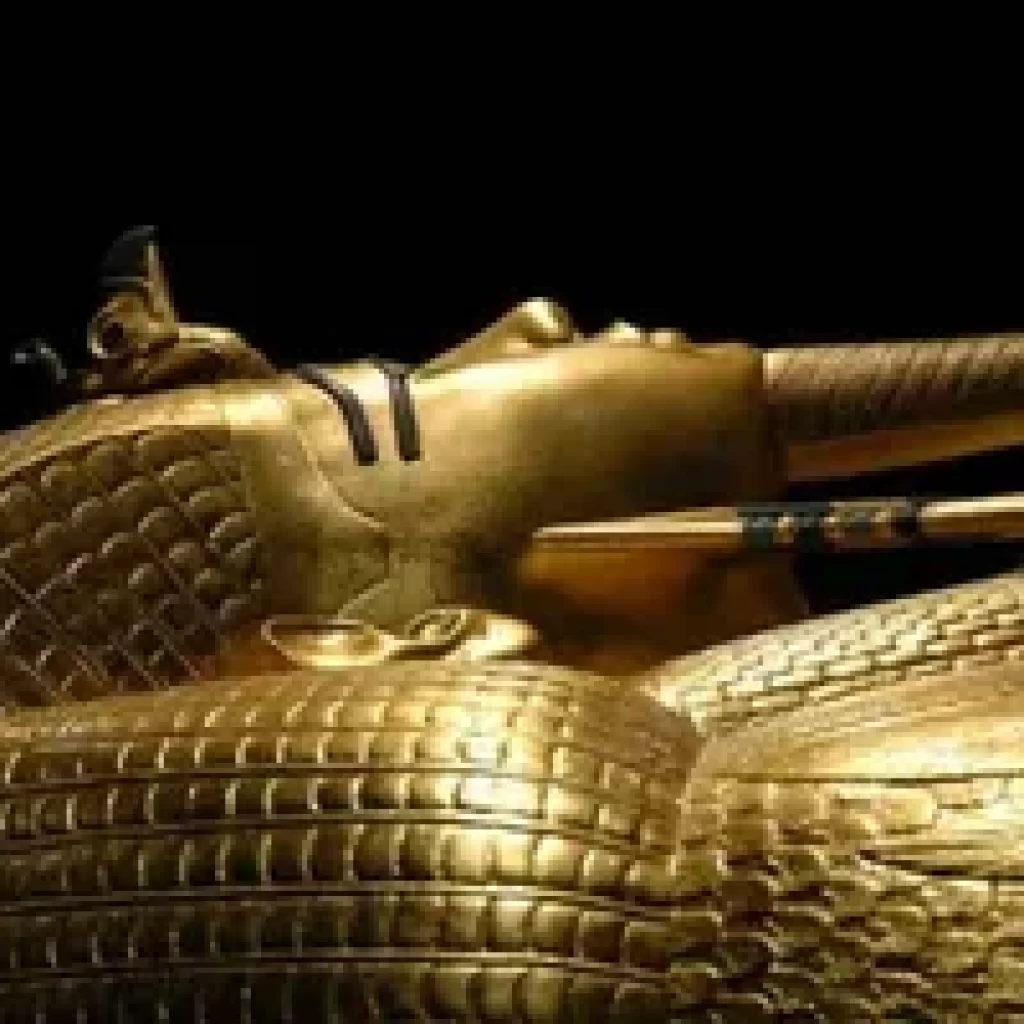
Welcome to The Egyptian Museum in Cairo, located in Cairo, Egypt, which houses the largest collection of Egyptian antiquities in the world. Located in a building built in 1901, it is the largest museum in Africa.
The museum has two floors and is rectangular in shape with a large hall at the center. We will walk through the first floor, entering every room, and then move on to the second floor at time 1:24:41. This room contains artefacts from the Predynastic (6000 – 3000 BC) to Early Dynastic (2920 – 2544 BC).
- A Brief History
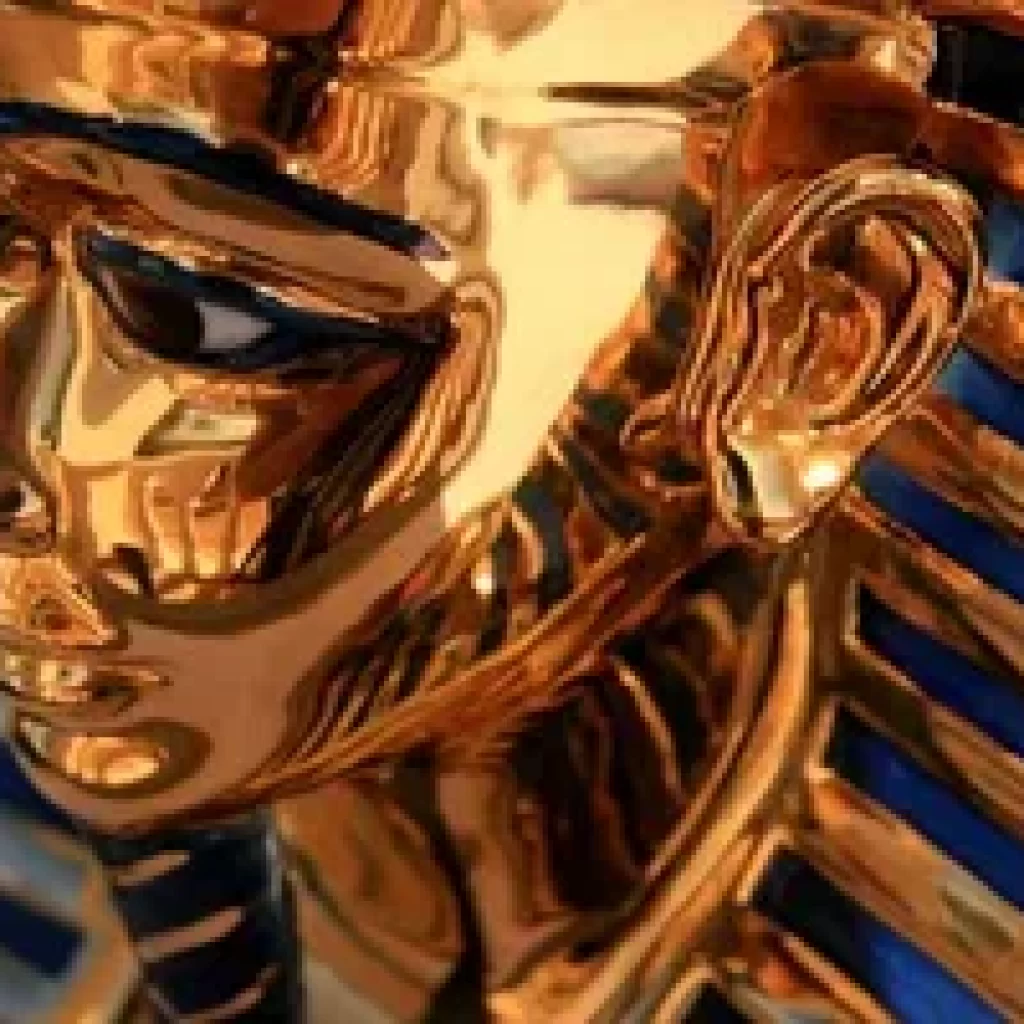
The Egyptian Museum was first established in 1835. The objects moved from one location to the next over the next several decades until they were moved here to Tahrir Square in 1901. A new Grand Egyptian Museum has been under construction for the last several years and is nearly complete.
- The Architecture
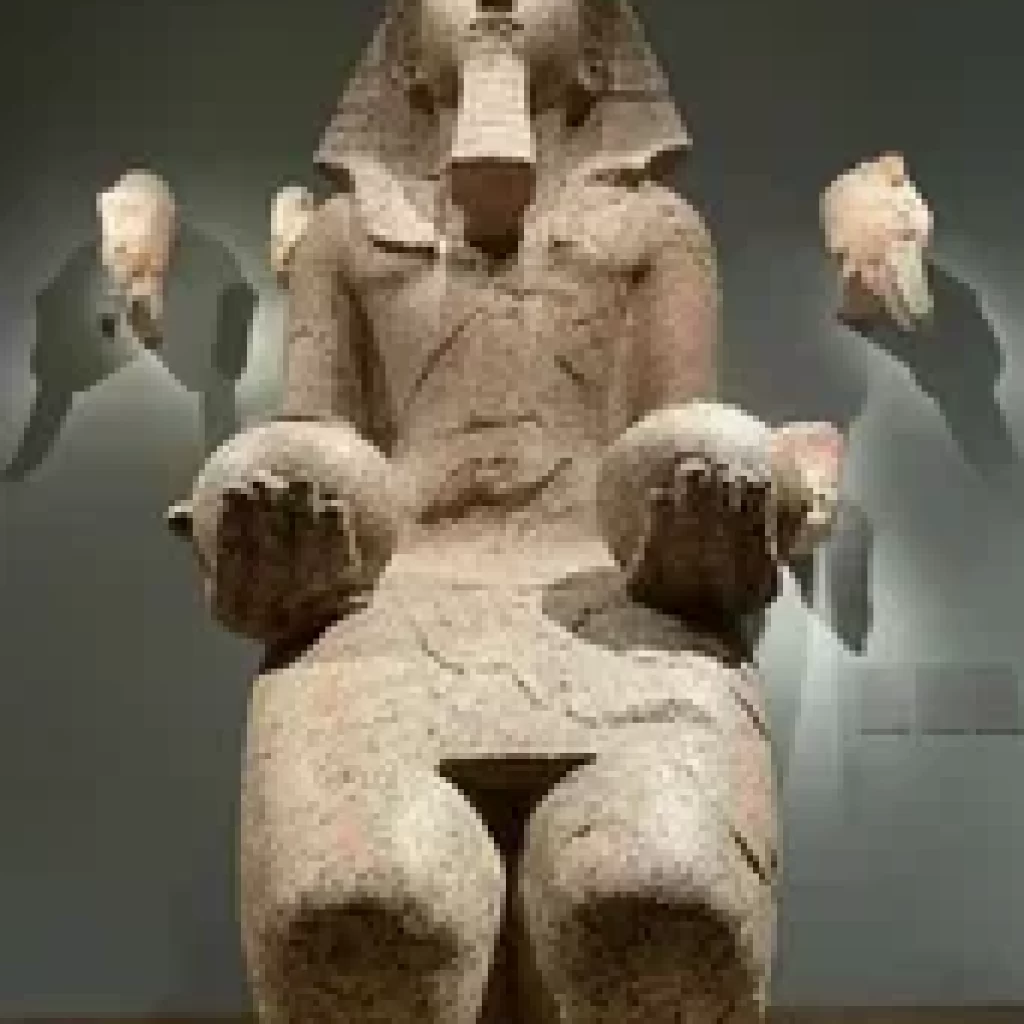
The Department of Antiquities operated a saleroom in the Egyptian Museum in Cairo starting in1902 in room 56 on the ground floor. Original ancient Egyptian artworks and other original artefacts were sold in that room.
- The Highlights of the Egyptian Museum:
This is the Narmer Palette, which dates to around 3100 BC and is carved out of a dark grey-green siltstone. The palette contains some of the earliest hieroglyphic inscriptions ever found and has been considered “the first historical document in the world”. To our left is a strange and unique object known as the Disc of Sabu, or Tripled Disc, which was found in the tomb of Prince Sabu in 1936.
- The Tutankhamun Collection

This is the Ceremonial Throne of Tutankhamun, which once held a cushion and is inlaid with ebony and ivory. It is often called ‘Tutankhamun’s Ecclesiastical throne’ in association with the bishop’s seats of the Middle Ages in Europe. The label on this display says, “Mummy of a Woman with Portrait.
- The Royal Mummies Hall
The last “great” pharaoh from the New Kingdom is widely considered to be Ramesses III, a Twentieth Dynasty pharaoh who reigned several decades after Ramesses II. This granite sphinx is a portrait of Hatshepsut with the elegant feminine features of all her statues. It was one of several that once stood at Hatshepsut’s mortuary temple.
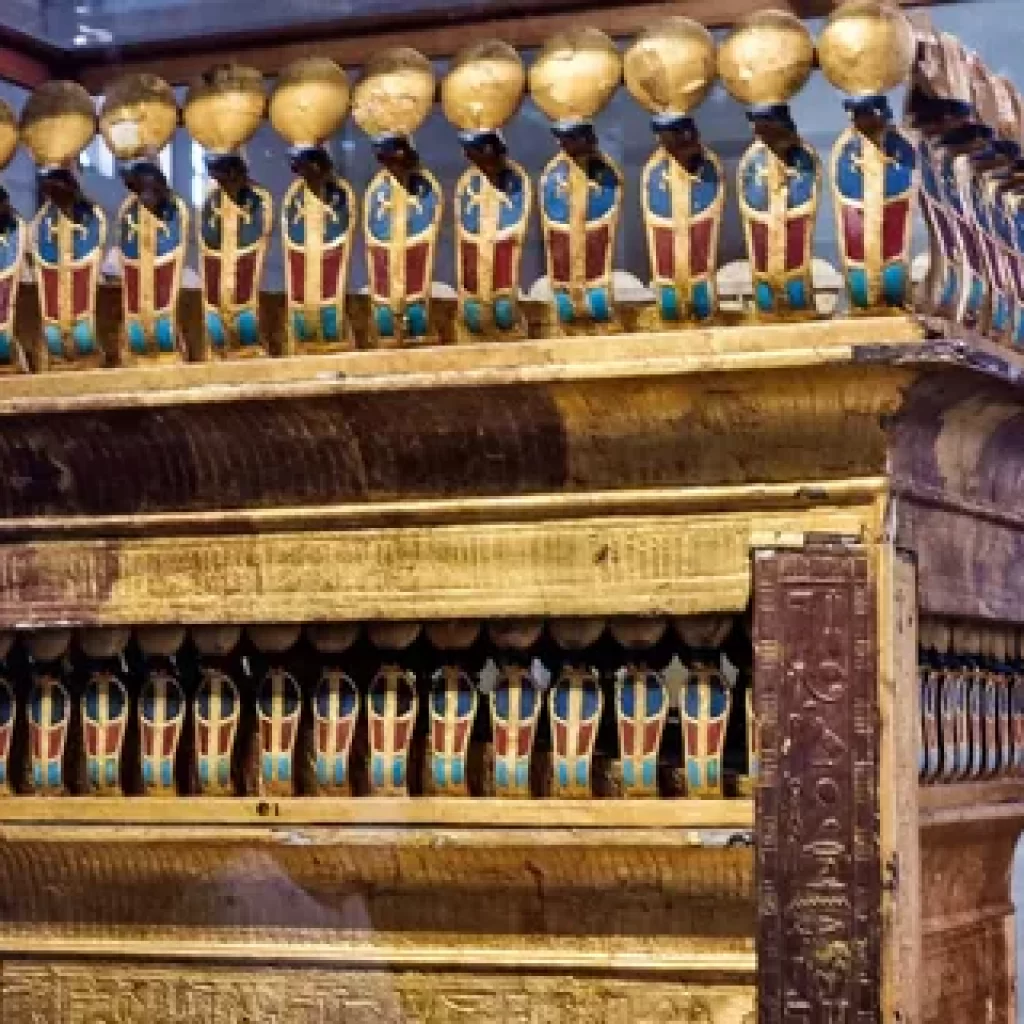
6. The Ancient Egyptian Artifacts
These are the Canopic jars which contain the dead pharaoh’s viscera (internal organs — lungs, stomach, intestines and liver). This was one of two wooden statues guarding the sealed entrance of Tut’s burial chamber. On his feet are slippers made from solid gold. This is King Tut’s golden throne. Its colours have not faded over three thousand years, which serves as a testament to the high skill of the ancient Egyptian craftsmen.
7. The Rosetta Stone
The Rosetta Stone has a message carved into it, written in three types of writing, Hieroglyphs, Demotic, and Ancient Greek. This is a bust of Zeus, a part of the new Graeco-Roman display.
This is a reconstruction of the stela, of which the Rosetta Stone was originally a part. The original Rosetta Stone is at the British Museum, where it has been since 1802. Some have called for the Rosetta Stone to be returned to Egypt, but the stone will not be going anywhere for right now. Room 50, along with most of the rooms down the next corridor, contains artefacts dating from the third intermediate period and late Graeco-Roman period.
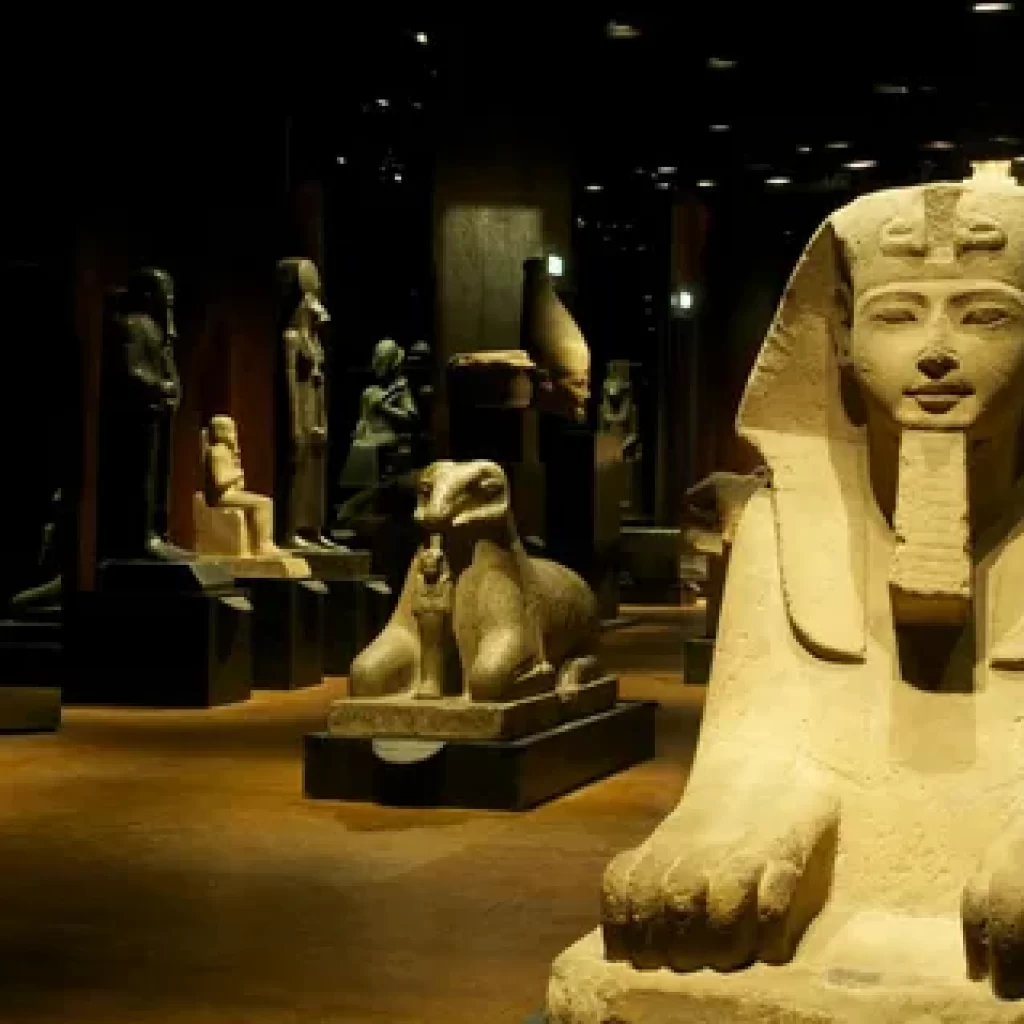
- The Museum’s Role
The Egyptian Museum serves as a guardian of Egypt’s cultural heritage, preserving and protecting invaluable artefacts for future generations. Learn about the conservation efforts undertaken by the museum and the challenges it faces.
- Future Developments
As the world evolves, so too must the Egyptian Museum. Explore the future plans and ongoing projects aimed at enhancing the visitor experience and ensuring the long-term preservation of Egypt’s cultural treasures.
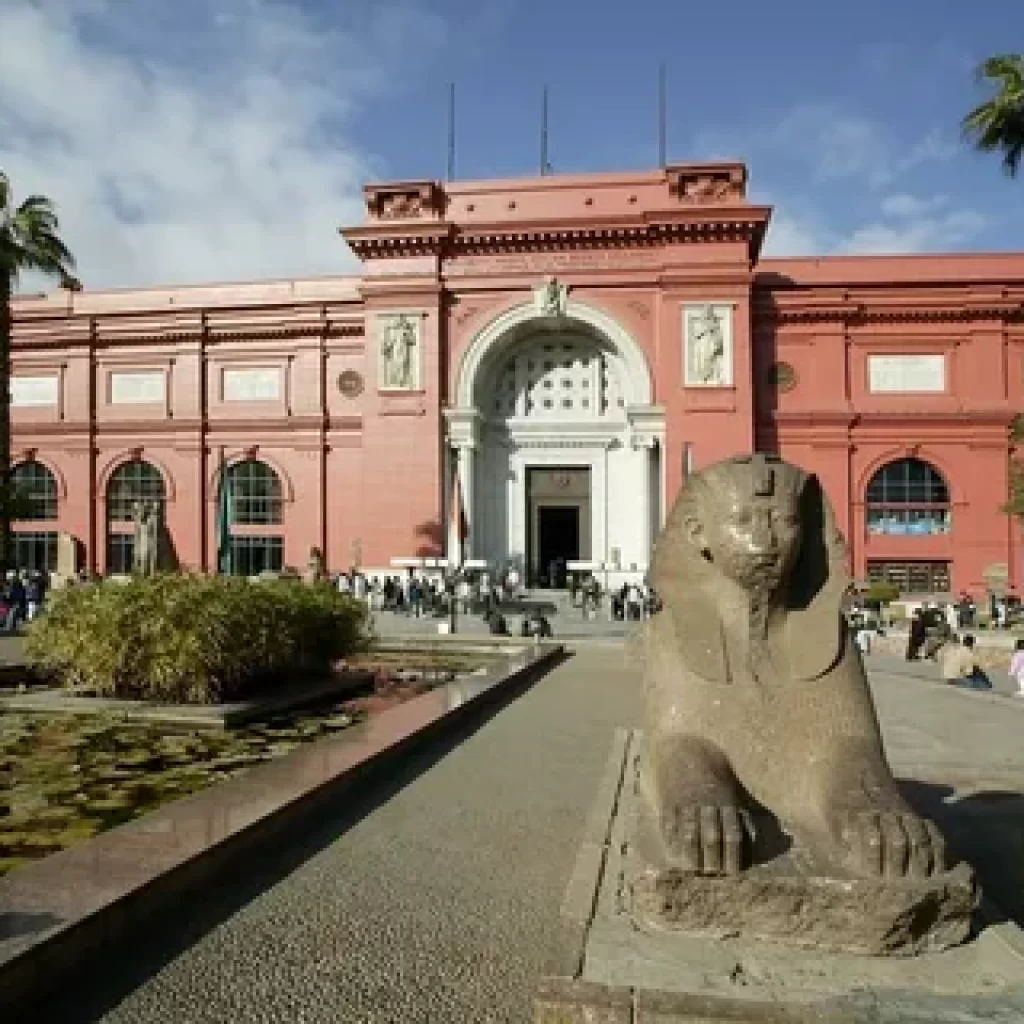
10. Conclusion: The Egyptian Museum in Cairo
The Egyptian Museum is the oldest Egyptian antiquities museum in the world, and it has been an icon of ancient Egyptian civilization for 120 years. It is not going away. There will simply be TWO museums now here in Cairo. “Each of them has its nature, and they complement each other,” said Ali Abdel, the Egyptian Museum Cairo (EMC) director.
FAQs: The Egyptian Museum in Cairo
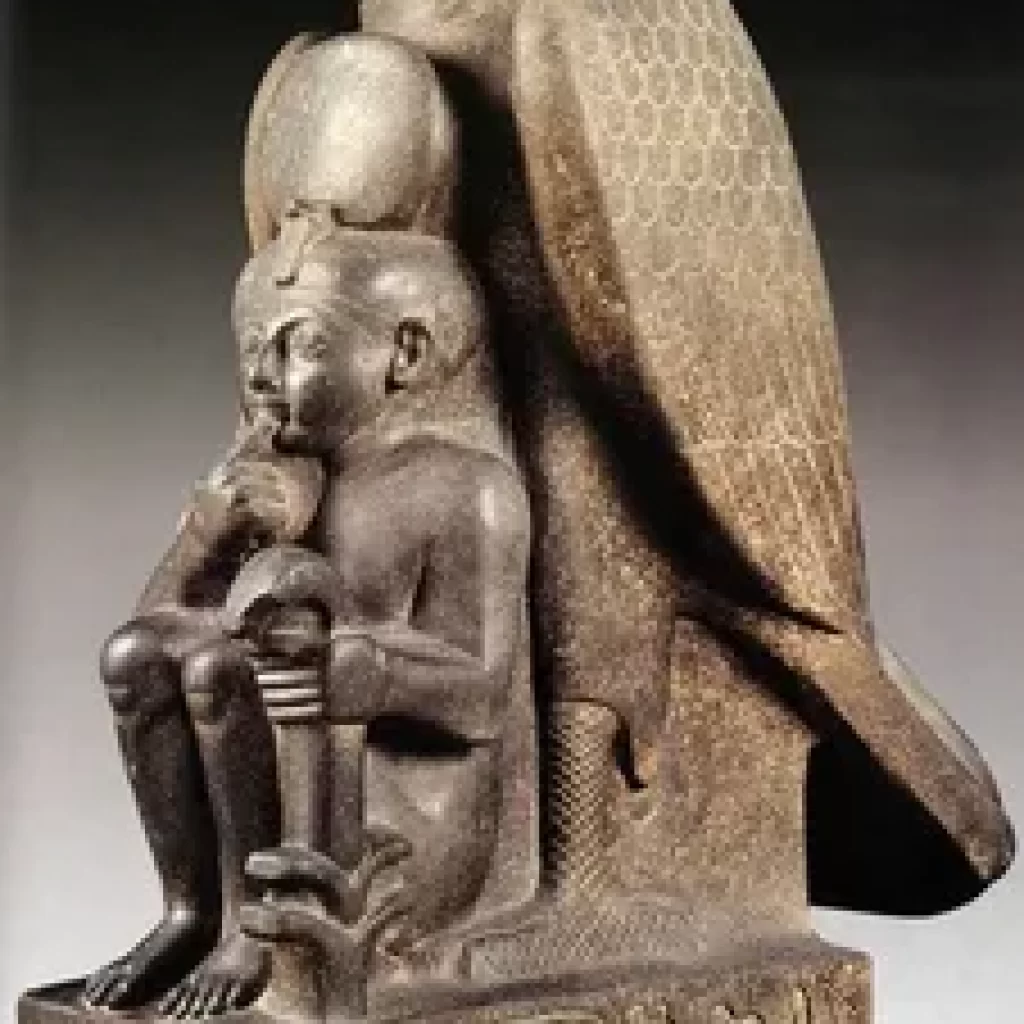
1. How much does it cost to visit the Egyptian Museum?
Admission fees vary. It is advisable to check the official website of the museum for the latest information on ticket prices.
2. Can visitors take photographs inside the museum?
Yes, photography is allowed in most parts of the museum, but flash photography and tripods are generally prohibited.
3. Are there guided tours available?
Yes, guided tours are available at the museum. They provide insightful information about the exhibits and the history of Ancient Egypt.
4.How long does it take to explore the entire museum?
The duration of a visit depends on individual preferences, but it is recommended to allocate at least a few hours to explore the museum thoroughly.
5. Is the museum accessible to people with disabilities?
Yes, the Egyptian Museum has facilities to accommodate visitors with disabilities, including wheelchair accessibility and elevators.
6. Are there any restrictions on touching the artefacts?
To preserve the artefacts, touching is generally not allowed. Visitors are advised to keep a safe distance from the exhibits.
7. Can I buy souvenirs at the museum?
Yes, there is a gift shop at the museum where visitors can purchase a variety of souvenirs, including books, replicas, and jewelry inspired by ancient Egyptian art and culture.





Comment (0)